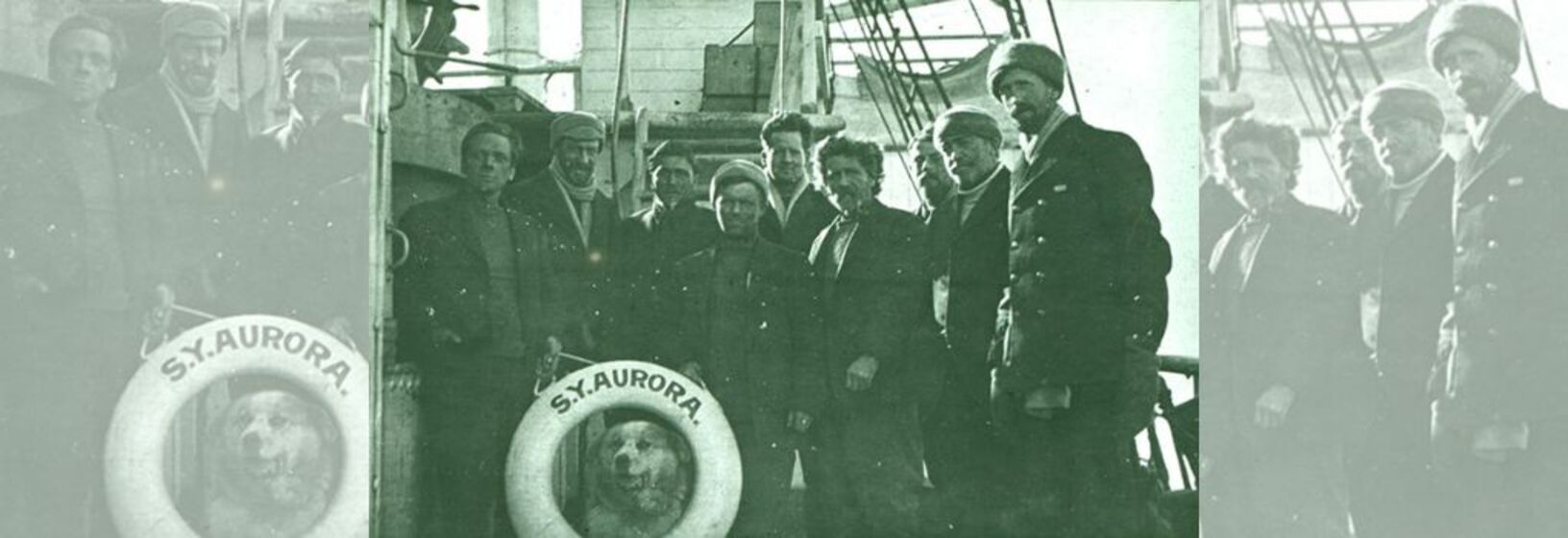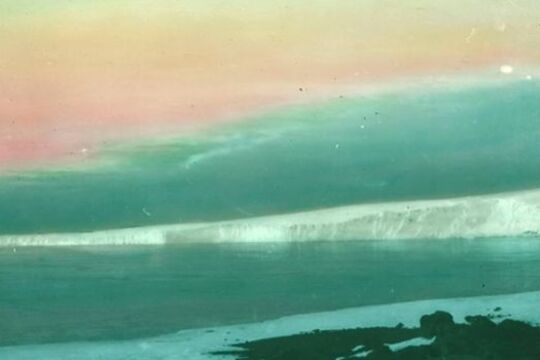Essay - Ross Sea Party and the Imperial Trans Antarctic Expedition
Expedition with Scott
In 1914 Ernest Shackleton, for the 3rd time, headed south to the Antarctic. He had been there in Robert Scott’s Discovery expedition of 1901-04. He, along with Scott and Edward Wilson, attempted a dash to the South Pole. They barely got half way. Shackleton was effected badly by scurvy. Humiliatingly, at times he had to ride on a sled pulled by Scott and Wilson on the return journey. Scott used Shackleton’s health problems as a reason to have him sent back to England after the first winter while most of the expeditioners stayed on for a second winter.
100 miles from the South Pole
Ever the optimist Shackleton led his own Nimrod expedition in 1907. He got within 100 miles of the Pole this time. He returned to England in 1909 to be knighted. In 1910 Scott led another expedition to attempt the Pole. Norwegian Roald Amundsen had planned an assault on the North Pole but headed south at the last minute when both Frederick Cook and then Robert Peary emerged from the Arctic ice claiming success. Cook’s claim was discredited, Peary’s was accepted.
Pole conquered
Amundsen’s meticulously planned and executed journey to the South Pole was in contrast to Scott’s desperate, brutal trek. After arriving at the South Pole to discover that Amundsen’s party had beaten him there, Scott and his 4 companions all perished on the return journey.
Across the Antarctic
After the South Pole was reached, Shackleton felt that the only thing left to achieve was to cross the continent, from the Weddell Sea to the Ross Sea through the South Pole. This was the Imperial Trans Antarctic Expedition using the ships Endurance and Aurora. He set off on this ambitious expedition just as war was declared in August 1914. In order to succeed he needed store depots to be laid beyond the pole from the Beardmore Glacier north to Ross Island. A party was dispatched to the Ross Sea in the ship Aurora for this purpose.
First year
The stores party left Hobart on December 20, 1914 on board the ship Aurora. The plan was to use the hut built by Scott’s 1910-1912 expedition at Cape Evans on Ross Island. Aurora was moored nearby to be iced in over the winter.
Stranded on Ross Island
They commenced their first sledging trip on January 20, 1915 and continued laying depots for Shackleton up until March. One team was stranded at Hut Point at the southern tip of Ross Island in a dilapidated hut built by Scott in 1901. They were unable to cross the sea ice to reunite with the Cape Evans party until June 2, 1915.
Loss of the Aurora
On May 6, 1915 Aurora was torn from its moorings in a fierce blizzard and carried away. The party of 10 men on Ross Island were stranded. They had limited supplies and much depot laying work to be completed the following summer.
Aurora was trapped by the ice, and carried northwards for nearly 2000 kilometres. The crew were in a desperate situation with every chance the ship could be crushed. Finally, though, Aurora broke free into open water on March 15, 1916. The battered ship limped to New Zealand, arriving on April 3, 1916.
Laying supply depots
On October 1, 1915, 9 of the Ross Sea Party set out in teams of 3 to lay further depots. The previous season they had lost many dogs through poor management. This time the 4 dogs they had were crucial to their survival. The 3rd sledging party of Cope, Gaze and Jack had been sent back from 81° South when their primus stove had collapsed. They had been able to get across the sea ice before it broke up and arrived at Cape Evans on January 15, 1916. Alexander Stevens had only minor involvement with the sledging trips. He spent most of his time at the Cape Evans Hut.
Second year
Due to equipment problems, 3 of the stores party—Cope, Gaze and Jack—had been sent back join Alexander Stevens at Cape Evans in January 1916.
The first death
In late January 1916 the remaining 6 men were nearing the Beardmore Glacier. However several were succumbing to scurvy. The final depot was laid on January 26, 1916. The return journey was desperate as they fought illness and blizzards. Finally, within 2 days of the comparative safety of Hut Point, Rev. Arnold Spencer-Smith, a Church of Scotland priest, died.
Two other men, the expedition leader Aeneus Mackintosh and Victor Hayward, barely made it back to Hut Point alive. Once at Hut Point and on a diet of seal meat the 2 men recovered quite quickly. Hut Point, though, was an inhospitable place. The hut was almost derelict, icebound, dark and bitterly cold. The icy wind whistled through gaps in the walls. They were all desperate to make the 25 kilomtere journey across the sea ice to join their colleagues in the comparative comfort of the Cape Evans Hut.
Lost on the ice
Mackintosh and Haywood, carried barely alive to Hut Point, were most impatient to get to Cape Evans. These two, against all good sense, and to the horror of the remaining men who had worked so hard to save them, set off on May 8, 1916 to cross the sea ice.
The remaining 3 men made the crossing on July 15, 1916 only to find that Hayward and Mackintosh had not arrived. They were never seen again. Most likely they went through the rotten ice and drowned, or were carried out to sea as the ice broke up, a most horrific fate.
Long, bleak winter
The 7 men left endured life at Cape Evans. During the bleak darkness of winter it was a constant battle to find enough seals. Seal meat and blubber were indispensable for food and fuel. Richards suffered a health break down, Cope remained in bed most of the time. By late August as the daylight extended, Joyce, Wild and Gaze spent a lot of their time at Shackleton’s old hut at Cape Royds, 8 kilometres further north. Stevens complained of smoke in the Cape Evans Hut and retired to a tent he pitched nearby.
Keith Jack kept busy with scientific duties, meticulously taking and recording meteorological readings.
Saved
The men stranded on Ross Island were, of course, unaware that Shackleton’s trans Antarctic party had foundered in the ice of the Weddell Sea.
Endurance lost
Shackleton’s party had been warned by the whalers at South Georgia Island that ice conditions were particularly severe. Shackleton hoped to land at Vahsel Bay in the Weddell Sea. The ship became beset by pack ice in January 1915. Carried helplessly by the ice, Endurance was finally abandoned in October 1915. Crushed by the ice, it sank a month later.
Rescued from Elephant Island
The men remained camped on the drifting ice until April 1916. They then took to the 3 whale boats and made it to Elephant Island at the north end of the Antarctic Peninsula.
To get help Shackleton and 5 others made an epic open boat journey from Elephant Island to South Georgia. Shackleton, Worseley and Crean then walked across the mountainous island to the whaling station. On August 30, 1916 the Chilean ship Yelcho, with Shackleton on board, rescued the remaining men on Elephant Island.
Aurora returns
With Shackleton’s expedition funds virtually exhausted there was much discussion about who would conduct and finance a rescue of the men on Ross Island. Finally the British, Australian and New Zealand governments agreed to fund the rescue.
In January 1917 the Aurora re-entered the Ross Sea under the command of John King Davis and with Ernest Shackleton aboard. On January 10 the 7 remaining men of the Ross Sea stores party, together with the surviving sled dogs, were rescued after more than 2 years marooned in the Antarctic.
Davis had seen many Antarctic explorers but these “were just about the wildest looking gang of men that I have ever seen in my life. Smoke-bleared eyes looked out from grey haggard faces; their hair was matted and uncut; their beards were impregnated with soot and grease.”
By team member Dick Richards reckoning, the party’s epic sledging journeys encompassed 169 days, greater than any by Scott, Shackleton or Amundsen. The stores they laid remain locked in the Antarctic ice.




